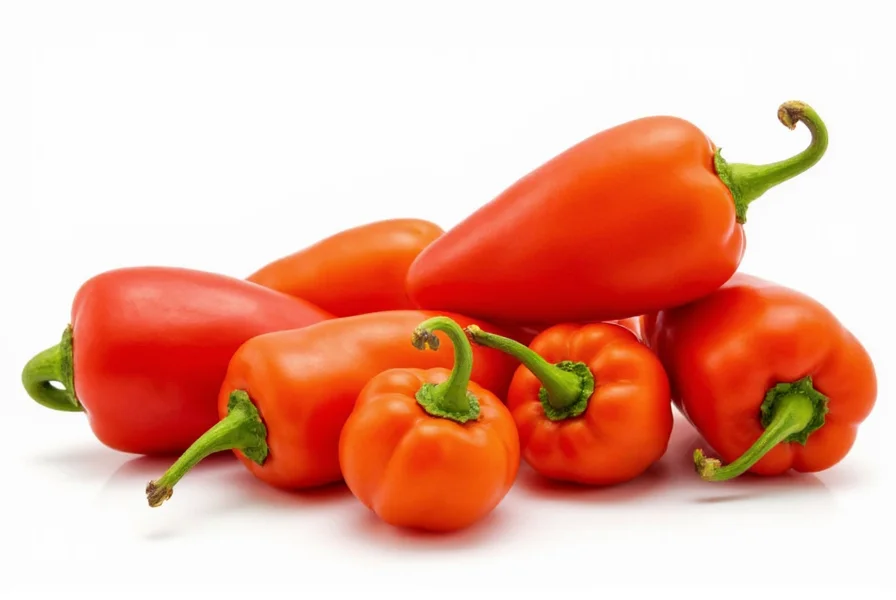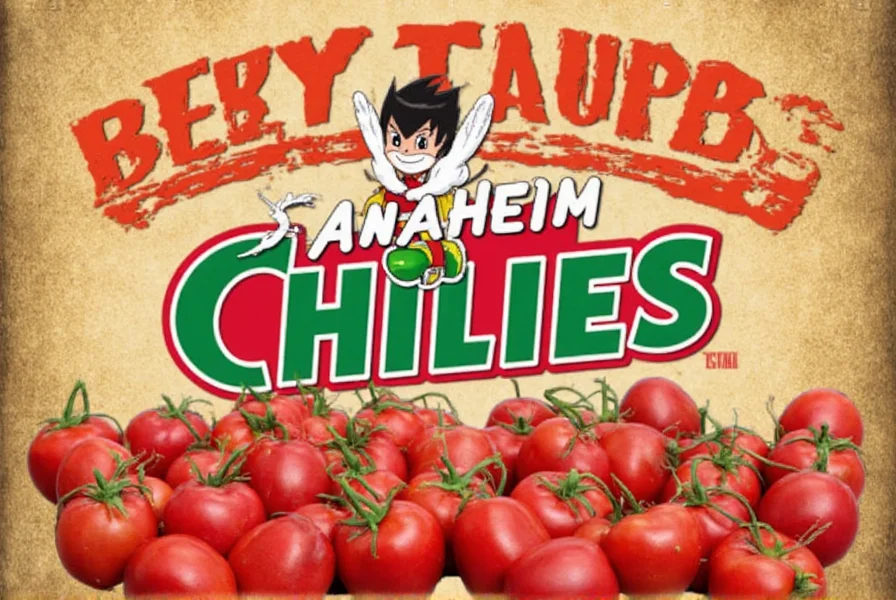Annaheim Pepper: A Spicy Twist on a Classic Favorite
Table of Contents
Introduction to the Annaheim Pepper
The Annaheim pepper is a versatile, mildly spicy chili that has been a staple in Mexican and Southwestern cuisine for decades. Known for its sweet and smoky flavor, this pepper is often used in salsas, sauces, and roasted dishes. But what exactly makes it so special? Let’s dive into the world of the Annaheim pepper.
Originating from the city of Anaheim in California, the Annaheim pepper was first cultivated in the early 20th century. It quickly became a favorite among home cooks and professional chefs alike due to its balanced heat and rich flavor. Whether you're a seasoned spice enthusiast or just starting your culinary journey, the Annaheim pepper is a must-have in your kitchen.
Flavor Profile and Heat Level
The Annaheim pepper is known for its mild to medium heat level, typically ranging between 1,000 to 3,000 Scoville Heat Units (SHU). This makes it an excellent choice for those who want a bit of heat without overwhelming their taste buds. Its flavor is sweet, slightly tangy, and has a subtle smokiness that enhances many dishes.

Unlike some hotter peppers, the Annaheim pepper doesn't have a sharp or fiery bite. Instead, it offers a smooth, rounded heat that lingers on the tongue. This makes it perfect for adding depth to soups, stews, and even grilled meats.
Culinary Uses and Popular Dishes
The Annaheim pepper is incredibly versatile and can be used in a variety of ways. Here are some of the most popular uses:
- Salsa: The Annaheim pepper is a key ingredient in many traditional Mexican salsas, especially those that include tomatoes, onions, and cilantro.
- Roasted Dishes: Roasting the pepper brings out its natural sweetness and adds a smoky dimension to any dish.
- Stuffed Peppers: These are a favorite in many households, often filled with rice, beans, cheese, and meat.
- Hot Sauce: The Annaheim pepper is commonly used in homemade hot sauces, offering a mild yet flavorful kick.
- Grilled Vegetables: Sliced and grilled, the Annaheim pepper adds a nice texture and flavor to vegetable platters.


One of the most popular dishes featuring the Annaheim pepper is chiles rellenos, where the pepper is stuffed with cheese or ground meat and then baked or fried. Another favorite is salsa verde, which uses green chilies like the Annaheim for a fresh, zesty flavor.
Buying Guide for Annaheim Peppers
If you're looking to add the Annaheim pepper to your kitchen, here are some tips for selecting the best ones:
Choosing Fresh Annaheim Peppers
- Appearance: Look for firm, glossy peppers with no wrinkles or blemishes. They should be bright green when unripe and turn red as they mature.
- Smell: A fresh Annaheim pepper should have a mild, earthy aroma. Avoid peppers that smell sour or off.
- Weight: Heavier peppers tend to be more juicy and flavorful than lighter ones.
When to Buy Dried or Canned Annaheim Peppers
If you're not able to find fresh Annaheim peppers, dried or canned versions are a great alternative. Dried peppers can be rehydrated and used in soups or stews, while canned peppers are ideal for quick recipes like salsa or enchiladas.
Some popular brands include:
- Certified Organic Annaheim Peppers: Ideal for health-conscious consumers.
- Mexi-Best Canned Annaheim Peppers: Great for making fast, easy salsas.
- Trader Joe's Dried Annaheim Peppers: Perfect for roasting and using in spice blends.
These products are suitable for both casual cooks and serious chefs, and they work well in a variety of occasions—from family dinners to weekend barbecues.
Top 10 Tips for Working with Annaheim Peppers
Whether you're a beginner or an experienced cook, these tips will help you get the most out of the Annaheim pepper:
- Wear gloves: Always wear gloves when handling peppers to avoid transferring capsaicin to your skin or eyes.
- Remove seeds and membranes: For a milder flavor, remove the seeds and white membranes before cooking.
- Roast for depth: Roasting the pepper enhances its natural sweetness and adds a smoky layer to your dish.
- Use in moderation: Even though the Annaheim pepper is mild, too much can still overpower a recipe.
- Pair with citrus: A squeeze of lime or lemon juice can balance the pepper's richness.
- Freeze for later use: Cut and freeze the peppers for future recipes.
- Make your own sauce: Blend cooked peppers with garlic, vinegar, and oil for a homemade hot sauce.
- Try different varieties: Annaheim peppers come in green, yellow, orange, and red—each with a slightly different flavor profile.
- Use in desserts: Believe it or not, some chefs use Annaheim peppers in spiced desserts like chocolate mole or cinnamon-spiced cakes.
- Experiment with pairings: Try combining Annaheim peppers with ingredients like avocado, tomatoes, or corn for a unique flavor combination.
Remember, the Annaheim pepper is all about balance—its heat is gentle, its flavor is rich, and its versatility is unmatched. With a little creativity, you can elevate any dish with this humble but powerful chili.
Comparison Table: Annaheim vs. Other Common Peppers
| Pepper | Heat Level (SHU) | Flavor Profile | Best Uses |
|---|---|---|---|
| Annaheim Pepper | 1,000 - 3,000 | Earthy, sweet, slightly smoky | Salsa, roasting, stuffing, hot sauce |
| Jalapeño | 2,500 - 8,000 | Mildly spicy, grassy | Quesadillas, guacamole, tacos |
| Chipotle | 2,500 - 8,000 | Smoky, rich, slightly sweet | Barbecue sauces, stews, dips |
| poblano | 1,000 - 1,500 | Earthy, slightly sweet, mild | Chiles rellenos, soups, salsas |
| Ghost Pepper | 800,000 - 1,000,000 | Extremely spicy, fruity | Hot sauces, challenge foods, specialty dishes |

As you can see, the Annaheim pepper sits in the middle range of heat, making it a good choice for those who want a little spice without the intensity of hotter varieties. Its flavor is also more complex and nuanced than some other common peppers, which gives it a unique place in the world of spices.
Conclusion
The Annaheim pepper is a delightful addition to any spice collection. With its mild heat, sweet and smoky flavor, and incredible versatility, it’s no wonder it has become a favorite in kitchens around the world. Whether you’re making a simple salsa or a complex stew, the Annaheim pepper can bring depth and character to your dish.
So next time you're at the market or grocery store, don’t skip the Annaheim pepper. It might just be the secret ingredient you’ve been missing. Remember, the right spice can transform a meal from good to unforgettable—and the Annaheim pepper is one of those magical ingredients.










 浙公网安备
33010002000092号
浙公网安备
33010002000092号 浙B2-20120091-4
浙B2-20120091-4